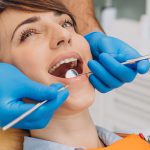Hyaluronic Acid Joint Injections
Hyaluronic acid is naturally occurring in joints, in the synovial fluid which cushions joints. In arthritis, this synovial fluid becomes narrowed, and so offers less cushioning. Hyaluronic acid injections boost the naturally occurring fluid, which boosts the cushioning. This is well evidenced to reduce the pain felt by arthritis, and delay the need for surgery by on average three years.
Hyaluronic acid supports the joint without degrading the joint in any way. The benefit from these will build over the first six weeks following administration, then will last for six to twelve months. The aim for this is that pain and mobility improves, which means the muscles will strengthen which in turn improves overall joint health.
The risks are low, and minimally systemic. Risks are short lived and will generally resolve within a few days, if experienced at all. Hyaluronic acid injections are useful in the treatment of arthritis of all degrees, but the greatest benefits have been shown in mild to moderate arthritis.
The Risks To Be Aware Of Are:
- Pain: It is possible some patients experience an increase in pain lasting from 2-5 days following the injection.
- Risk of bleeding: Bleeding from the injection site would be stopped before leaving clinic, but any further bleeding should be stopped with firm pressure for a minute or two and a simple plaster. This risk is greater for those on anticoagulants.
- Nerve injury & worsening of symptoms: This is typically only in the short term, but can lead to a sustained increase in symptoms.
- Failure to work: this is always a possibility with any medical or surgical intervention. While we expect to see results, the pains may not resolve, or may return.
- Other potential complications: These include feeling flush or faint, allergic reaction, and vascular or nerve damage
- Infection: As with any surgical or medical intervention, there is an increased risk of infection. This is thought to be around 0.005%- 0.0002% increased likelihood of septic arthritis.
This Can Be Given In:
- Shoulders
- Hands
- Hips
- Knees
- toes
Norfolk Health and Joint Care offer two brands, ostenil- plus, and durolane
What our clients say
Thank you very much for giving me the steroid injection in my shoulder, it has eased the pain 40%, and made my life back to normal.
Dear Jon,
You gave me a steroid jab in my right hand, and I'm delighted to sat it has worked its wonderful magic. Thank you very much.
Jon was brilliant. He had time for me and answered all of my questions and communicated information really well. I feel very reassured after being so worried. Very much appreciate his time.
Many thanks for your kindness and support.
You were really good, attentive and informative.
All good now. Thanks Jon
Life changing
The reduction in pain and increased mobility is very good
At least 85% improvement, they are not waking me in the night with pins & needles anymore










